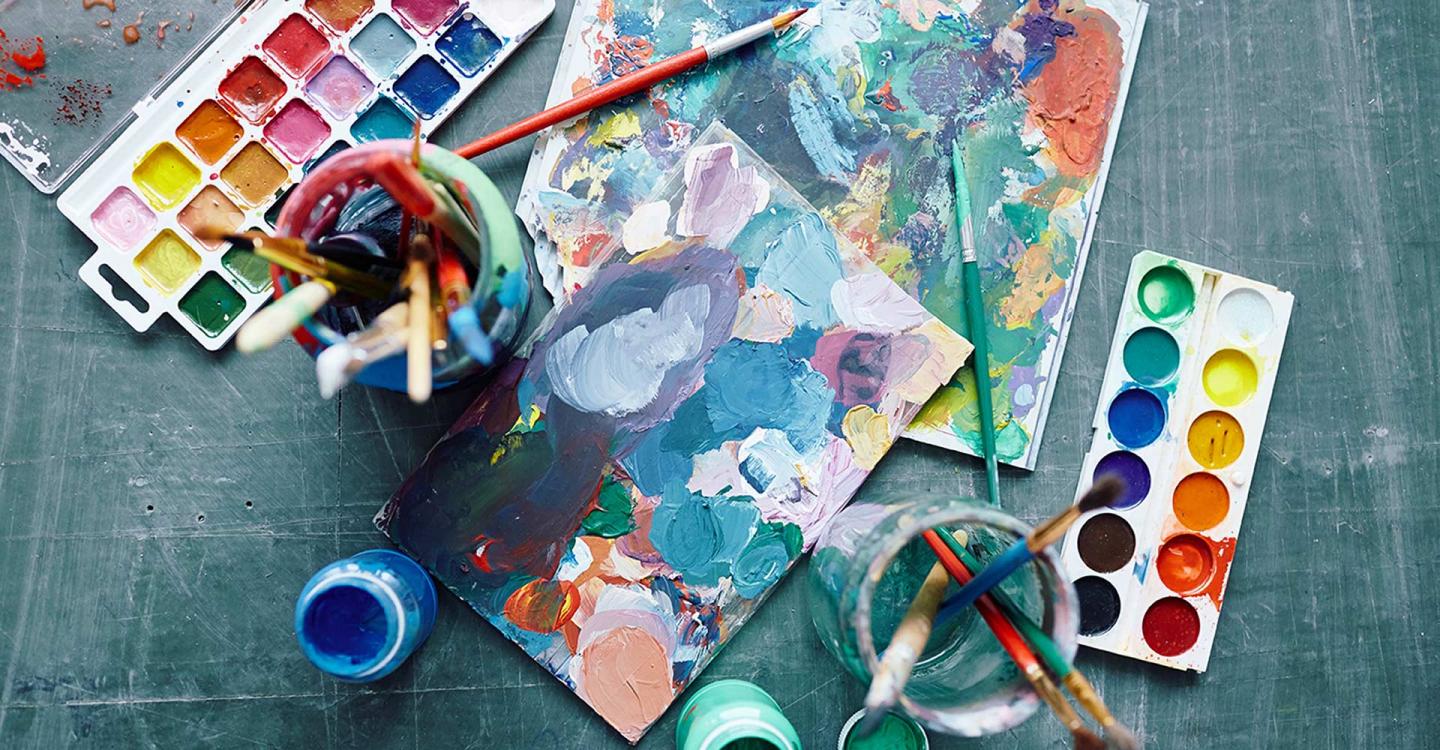Art Therapy
March 1, 2019
Art, by nature, affords the unique opportunity of self-expression. Whether it be the viewers projecting their ideas and feelings upon a work or the creators making pieces that express their ideas, art seems to possess infinite layers and meanings. Its appeal is universal, as humans constantly seek to understand in their own way themselves and that which is around them. Because of this desire to enlighten and offer pieces of oneself, art therapy has become an extremely effective means of reaching people in ways that other forms of therapy might not be able to.
The Hutchison Certificate of Arts Program had the unique opportunity of meeting with Kerry Curtis, an art therapist, in order to learn more about how this form of therapy works and why it works. Kerry Curtis started out as a marine biologist in college, and though she switched her major to pre-vet and only took on studio art as a minor, she ended up loving art and its social aspects, graduating from Notre Dame with a major in studio art and a minor in psychology. Through a thorough personal investigation of what she liked and disliked about her classes, she was able to adjust and intertwine her career path with service learning. Curtis runs a private practice in Midtown for out-patient therapy (patients no longer in a hospital) and works mostly with teenagers experiencing anxiety and trauma. Additionally, she has united her efforts with the Dixon Art Museum to provide art therapy for Alzheimer patients and childrens groups at the museum. She says that, “It’s nice to be able to give back for a living.”
In Curtis’ opinion, the beauty of art therapy is its ability to become whatever the patient needs it to be; this causes each art therapist to take a different approach to not only each patient, but to therapy itself. Every single patient is unique and participates in therapy for their own reasons, so the main goal is to externalize what is circulating within, whatever it may be.
Trauma-focused art therapy focuses on the process of creating the art as a means of giving the artist power over their own emotions and memories. Trauma begins in the brain as images, so with children, art-therapy utilizes art and play. When producing art, defenses are down: a helpful tool which renders art therapy better than conventional talk-therapy for some. For adults, the process of drawing and creating art helps externalize internal trauma so that the patient has more control of their emotions and experiences. For some, the art might bring out the realities of their emotional state that they haven’t yet even come to terms with; for others, the art might simply be a way of putting on paper their burdens and letting go.
Similarly, for art therapist patients who experience dementia, the therapy is more focused on breaking the barriers of isolation and the difficulty of communication. The loss of their memories makes it difficult to connect with those around them, but the art they make helps them live in the moment and engage with the materials; there is no pressure to remember: there is only the present moment. One of the projects Kerry Curtis gives these patients is “The Circle” which is centering and calming with a focus not on creating a fantastic or special end-product but rather to focus on the process of creation. Another one, “The Monet Bridge” also addresses the present, with a special emphasis on spring time, the freeness of being outside, and impressionism. Each project is carefully picked to target mind-body connections and to break defenses (internal and external).
From the carefully picked projects to additional sensory tools such as scented candles and calming music, art therapy helps each individual patient to find the strength already within his or herself to rise above whatever trauma or struggles that once ruled over him or her.

